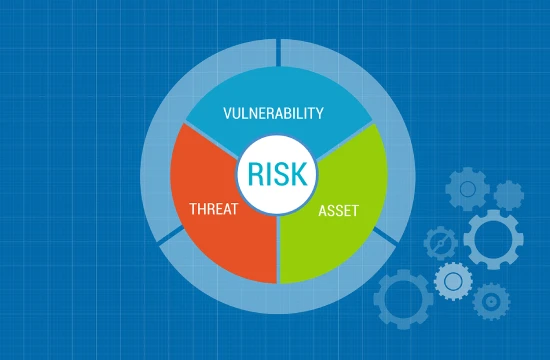What is Threat and Vulnerability Management (TVM)?
Threat and Vulnerability Management (TVM) is a proactive cybersecurity approach designed to identify, assess, and mitigate security risks within an organization’s IT environment. It is an essential component of modern cybersecurity strategies, helping businesses reduce their attack surface and prevent potential security breaches. By continuously monitoring for vulnerabilities and assessing potential threats, TVM enables organizations to prioritize and remediate risks before they can be exploited by cybercriminals.
At its core, Threat and Vulnerability Management involves several key processes. The first step is identifying vulnerabilities across an organization’s network, systems, applications, and endpoints. This includes scanning for outdated software, misconfigurations, weak passwords, unpatched security flaws, and other security gaps that attackers might exploit. Automated vulnerability scanners and threat intelligence tools play a crucial role in detecting these weaknesses in real-time.
Once vulnerabilities are identified, they must be assessed based on their potential impact and likelihood of being exploited. Not all vulnerabilities pose the same level of risk, so organizations must prioritize them effectively. Factors such as exploitability, severity, and business impact are considered when determining which vulnerabilities require immediate attention. Cybersecurity frameworks like the Common Vulnerability Scoring System (CVSS) help organizations rank vulnerabilities and focus on the most critical ones.
Threat intelligence is another critical component of TVM. By gathering and analyzing data from various sources, such as cybersecurity research firms, government agencies, and security vendors, organizations can gain insights into emerging threats and attacker tactics. This enables them to take preemptive measures against potential cyberattacks before they occur. Threat intelligence feeds help security teams understand which vulnerabilities are actively being exploited in the wild and how adversaries are leveraging them.
The next step in the TVM process is remediation and mitigation. This involves applying security patches, updating software, reconfiguring systems, enhancing access controls, and implementing security best practices to eliminate vulnerabilities. For vulnerabilities that cannot be immediately patched, organizations implement compensating controls such as network segmentation, endpoint detection, or intrusion prevention systems to reduce risk.
Continuous monitoring is essential for maintaining an effective TVM program. Cyber threats are constantly evolving, and new vulnerabilities emerge regularly. By leveraging security automation, machine learning, and AI-driven threat detection, organizations can improve their ability to detect and respond to vulnerabilities in real time.
A robust Threat and Vulnerability Management strategy helps organizations strengthen their security posture, ensure compliance with regulatory requirements, and minimize the risk of data breaches. By proactively identifying and mitigating threats, businesses can stay ahead of cyber adversaries and protect their critical assets.
Key Components of Threat and Vulnerability Management
Threat and Vulnerability Management (TVM) is built upon several key components that work together to identify, assess, and mitigate cybersecurity risks. These components form the foundation of a proactive security strategy, enabling organizations to stay ahead of evolving threats and vulnerabilities. A comprehensive TVM program includes risk identification and assessment, vulnerability detection and prioritization, threat intelligence and analysis, and remediation and mitigation strategies.
Risk identification and assessment is the first crucial step in the TVM process. Organizations must have visibility into their IT environment to recognize security gaps that could be exploited by malicious actors. This includes identifying outdated software, misconfigured systems, unpatched applications, weak authentication mechanisms, and potential insider threats. Organizations often use automated security scanning tools and asset management systems to continuously monitor for new risks and assess the overall security posture of their networks.
Vulnerability detection and prioritization involve identifying security weaknesses and ranking them based on their level of risk. Automated vulnerability scanners help detect known vulnerabilities across an organization’s endpoints, servers, applications, and cloud infrastructure. However, not all vulnerabilities pose the same level of risk. A vulnerability’s severity is typically measured using frameworks like the Common Vulnerability Scoring System (CVSS),which assigns a numerical score based on exploitability, potential impact, and ease of mitigation. Security teams prioritize vulnerabilities based on these scores, as well as other factors such as whether an exploit is currently being used in real-world attacks.
Threat intelligence and analysis play a crucial role in effective TVM. By collecting and analyzing data from multiple sources, organizations can stay informed about emerging threats and attacker tactics. Threat intelligence feeds provide insights into active exploits, advanced persistent threats (APTs),malware campaigns, and zero-day vulnerabilities. Security teams use this intelligence to adjust their defense strategies, proactively patch high-risk vulnerabilities, and strengthen security controls before a breach occurs.
Remediation and mitigation strategies are essential for reducing an organization’s exposure to cyber threats. Once vulnerabilities are identified and prioritized, organizations must take action to fix or mitigate them. This can include applying software patches, updating configurations, enhancing network security controls, implementing multi-factor authentication (MFA),and enforcing least privilege access. In cases where immediate patching is not feasible, organizations deploy compensating security measures such as network segmentation, intrusion prevention systems (IPS),and endpoint detection and response (EDR) solutions to minimize potential damage.
Continuous monitoring and automation enhance the effectiveness of a TVM program. Cyber threats evolve rapidly, and new vulnerabilities emerge daily. Organizations must adopt a continuous assessment approach that includes regular security audits, automated scanning, real-time alerting, and AI-driven security analytics. By leveraging automation and machine learning, security teams can detect threats faster and respond more efficiently.
A well-structured Threat and Vulnerability Management program ensures that organizations remain resilient against cyber threats. By combining risk assessment, threat intelligence, and proactive remediation strategies, businesses can protect their critical assets, ensure regulatory compliance, and maintain a strong security posture in an ever-changing threat landscape.
Threat and Vulnerability Management vs. Traditional Security Approaches
Threat and Vulnerability Management (TVM) represents a proactive, risk-based approach to cybersecurity, whereas traditional security approaches often rely on reactive defenses that may not be sufficient against modern cyber threats. While both strategies aim to protect an organization’s IT infrastructure, TVM provides a more comprehensive, continuous, and intelligence-driven method for identifying and mitigating risks before they can be exploited. Understanding the differences between TVM and traditional security models can help organizations adopt a more effective and resilient cybersecurity posture.
Traditional security approaches are often centered around perimeter-based defenses, such as firewalls, antivirus software, and intrusion detection systems (IDS). These measures focus on blocking known threats at the network’s edge and responding to attacks once they have been detected. While these methods are essential for baseline security, they have limitations in addressing advanced threats, zero-day vulnerabilities, and sophisticated attack techniques that bypass traditional defenses.
One of the primary differences between TVM and traditional security is the shift from a reactive to a proactive security model. Traditional security models typically respond to incidents after they occur, relying on signature-based detection and predefined rules to identify known threats. In contrast, TVM continuously scans and assesses the IT environment for vulnerabilities, allowing organizations to remediate potential risks before attackers can exploit them. This proactive stance reduces the attack surface and strengthens the overall security posture.
Another key distinction is the use of automation and AI-driven analytics in TVM. Traditional security approaches often require manual intervention for threat detection and response, making them less efficient at handling large volumes of security events. TVM leverages automated vulnerability scanning, threat intelligence feeds, and machine learning algorithms to identify emerging threats in real time. By integrating these technologies, organizations can improve detection accuracy, reduce false positives, and prioritize vulnerabilities based on risk severity.
Threat intelligence also plays a significant role in differentiating TVM from traditional security. Traditional security measures focus on preventing generic threats based on known patterns, while TVM incorporates real-time threat intelligence to understand evolving attack tactics and techniques. This allows security teams to adapt their defenses dynamically, addressing high-risk vulnerabilities that threat actors actively exploit.
Risk-based prioritization is another advantage of TVM over traditional security models. Conventional security practices often treat all vulnerabilities as equal, leading to inefficient resource allocation and delayed remediation of critical risks. TVM, on the other hand, ranks vulnerabilities based on factors such as exploitability, business impact, and severity, ensuring that security teams focus their efforts on the most pressing threats.
TVM also aligns more closely with modern cybersecurity frameworks like Zero Trust and Continuous Adaptive Risk and Trust Assessment (CARTA). Traditional security models assume that internal systems and users can be trusted, whereas TVM operates on the principle that threats can originate from anywhere. By enforcing continuous risk assessments and adaptive security controls, TVM enhances protection against insider threats, supply chain attacks, and lateral movement within a network.
Additionally, TVM integrates seamlessly with compliance and regulatory requirements. Many industries require organizations to maintain strict security standards, such as PCI DSS, HIPAA, and NIST. TVM’s continuous monitoring and automated reporting capabilities help organizations maintain compliance by ensuring vulnerabilities are identified, tracked, and remediated in a timely manner.
Overall, Threat and Vulnerability Management provides a more effective, data-driven, and proactive approach to cybersecurity compared to traditional security methods. By shifting from reactive defense mechanisms to continuous threat assessment, leveraging AI and automation, and incorporating real-time threat intelligence, organizations can significantly improve their ability to prevent cyberattacks and secure their critical assets in an ever-evolving threat landscape.






